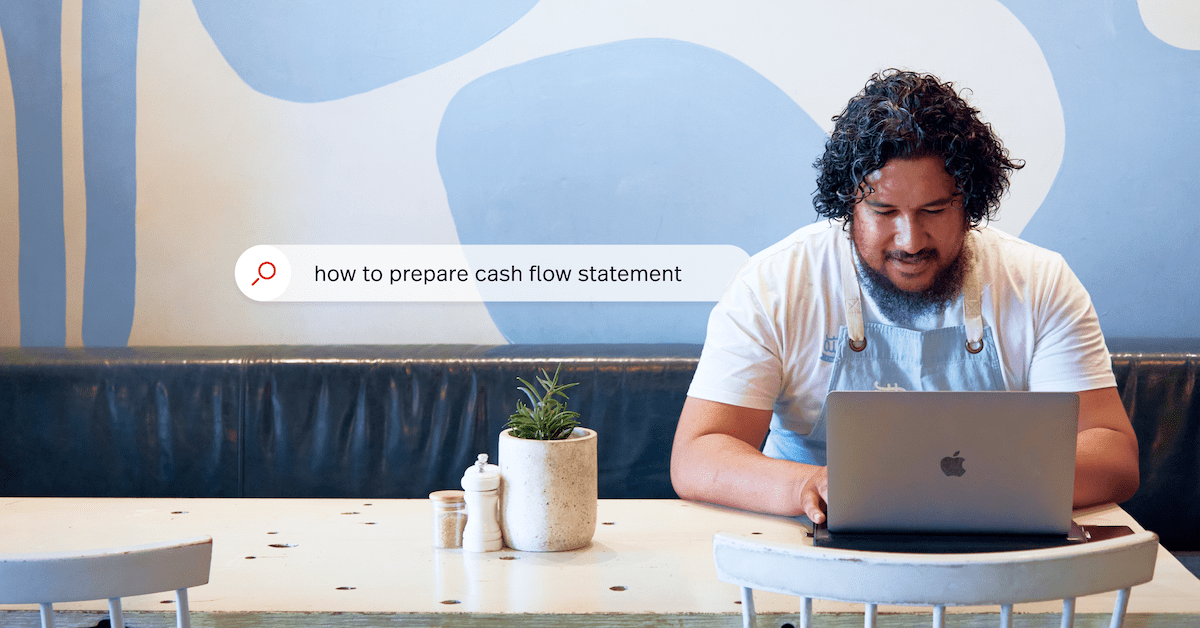
If you’re in the hospitality industry, you’ll know how important it is to stay on top of your finances. And understanding exactly how much money is coming in and where it’s coming from versus what’s going out (and where to) is a delicate balancing act.
Therefore, creating and maintaining a regular cash flow statement is crucial for understanding the overall financial health of your business and mapping out your business’ finances throughout the year.
But what is a cash flow statement, why is it important, and how easy is it to prepare one?
- What is a cash flow statement?
- Why do you need a cash flow statement?
- What documents are required?
- Indirect vs direct method
- How to prepare a cash flow statement
1. What is a cash flow statement?
In a nutshell, a cash flow statement tracks all the money that comes into and goes out of your business during a certain period.
Cash flow statements are used alongside balance sheets and income statements to assess the financial health of your business and assist in decision making. While all three financial tools are instrumental in understanding your business’s finances, your cash flow statement dissects how well your venue generates cash to pay any outgoings and fund operating expenses.
There are three main components of a cash flow statement, which result in the final cash balance:
- Operating cash flow – measure the amount of cash generated by your business
- Investing cash flow – details investing activities such as the purchase or sale of a fixed asset like property or equipment
- Financing cash flow – typically includes borrowing and repaying bank loans, buying or selling shares and dividend payments are also treated as a financing cash flow
When you prepare your cash flow statement, there are two methods you can follow, the direct method and the indirect method. These methods only apply to the operating cash flow section of your statement – the investing cash flow and financing cash flow are calculated in the same way.
2. Why do you need a cash flow statement?
Keeping track of the amount of money that flows in and out of your business allows you to navigate payment cycles or seasonal trends and helps you prepare for periods when you might need additional funds on hand.
While each hospitality business will use its cash flow statement in varying ways, there are several universal benefits to regularly preparing one.
- Gain insight into your expenses. Cash flow statements give a holistic view of your business spending during certain periods. This makes it easier to understand where you spend the most money and which categories generate the most expenses.
- Short-term planning. Cash flow statements tell business owners exactly how much cash the business has during certain periods. Therefore, it’s a valuable tool for projecting short-term spending, such as staff wages and monthly operating costs, to ensure there’s always enough cash to cover these expenses.
- Increase cash flow. Having insights into what’s generating revenue and costing money allows businesses to increase their cash flow. For example, a venue might be spending too much on inventory each month – meaning there’s an opportunity to optimise their inventory management processes to cut costs.
3. What documents are required?
You’ll need several documents to accurately and efficiently prepare your cash flow statement. Having these documents already prepared and up to date will also speed up completing your cash flow statement.
1. Balance sheet
A balance sheet provides an overarching view of your venue’s financial health. By listing your assets, liabilities (debt) and equities at a given point in time, you’re presented with a snapshot of your business’s net worth. This gives you an understanding of your current financial situation and lets you plan your short and long-term cash flow.
2. Statement of comprehensive income
Your statement of comprehensive income should include your net income and any other comprehensive income (unrealised gains and losses on assets that are not reflected in the income statement).
3. Statement of changes in equity
You statement of changes in equity measures the changes in your business’s equity throughout a specific accounting period. The report starts with the beginning equity balance and then adds or subtracts items, such as profits and dividend payments, to calculate the ending balance.
This document isn’t considered an essential part of your monthly financial statements, yet it is a common factor in annual financial assessments.
4. Cash flow statements from previous period
If you have prepared cash flow statements in previous months or years, you should use the most recent and up-to-date statement to prepare your new cash flow statement. This will ensure that your starting balance is accurate and aligns with your previous statement.
5. Receipts or information on previous transactions
You’ll need to save any receipts, invoices or payment information on transactions completed by your business within the reporting period. This information will be used to total the number of expenses or total cash spent to give an accurate picture of your outgoings.

4. How to prepare a cash flow statement
Once you have gathered all the necessary documents, it’s time to prepare your cash flow statement by following the below steps.
1. Determine the starting balance
In a new reporting period, the starting balance should be the same as the closing balance on the previous month’s (or year, depending on the reporting period) statement. This is where you’ll need to use your last income statement to find the closing balance.
If this is your first time preparing a cash flow statement, your starting balance will be the opening bank balance for the business. If you’re following the direct method for preparing your cash flow statement, you can skip this step and go straight to step two.
2. Calculate operating cash flow
As we mentioned earlier, there are two ways to calculate your operating cash flow – the direct and indirect methods.
The direct method
The direct method tallies up all individual instances of cash that are received or paid, and the total is the resulting cash flow. The direct method is often easier to understand and calculate. However, it’s often more time-consuming.
Firstly you’d calculate the total amount of incoming cash that came into your business during the reporting period, such as sales revenue and tax rebates.
Next, you need to calculate your outgoing cash and how much your business spent during the reporting period – this could include:
- Purchases, such as inventory
- Marketing costs
- Accountant fees
- Rent and utilities
- Staff wages
To calculate your total operating cash flow, simply subtract the total outgoing cash from the total incoming cash.
The indirect method
The indirect method requires you to start with the net income from your previous statement and make adjustments based on accounting line items such as net income, increases in inventory and depreciation to calculate cash flow.
3. Calculate investing cash flow
This section of your cash flow statement includes any investments and non-cash assets such as the purchase or sale of property, equipment and other financial assets.
For example, if you purchased a new fridge during the reporting period, you would record the item and its purchase price in this section. Similarly, if you sold a coffee machine during the same period, the proceeds of the sale would be recorded in this section.
4. Calculate financing cash flow
The financing cash flow section of your statement includes any incomings or outgoings related to financing your business.
This could include loan repayments for outgoing expenses, and for incoming cash, this could consist of business grants and dividend payments.
5. Calculate the closing balance
Once you have calculated the cash flow from the three main categories, you can determine the closing balance for your reporting period.
You’ll need to tally up the total operating, investing and financing cash flow totals to calculate your closing balance. The final number will show if your business has gained or lost money during the reporting period. A positive closing balance shows that your business has generated more cash than it spent during the reporting period, whereas a negative balance means you spent more than you earnt.
Keeping on top of your financial statements can be tricky and time-consuming, yet it’s essential for running a financially sound business. To make life easier for hospo owners, Lightspeed POS integrates with accounting platforms like Xero and Quickbooks, which makes calculating your operating cash flow a whole lot easier – thanks to insights like sales reports and invoice data.
No matter if you’re starting out in the industry, a new manager or a business owner, we hope this article has helped your understanding of cash flow statements, so you can create and manage your own and make informed decisions for the business.

News you care about. Tips you can use.
Everything your business needs to grow, delivered straight to your inbox.


